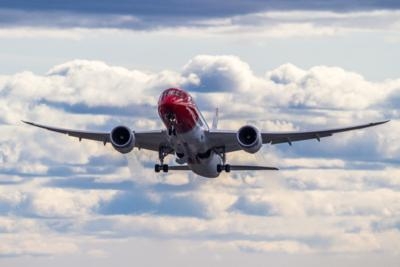Reached A New High For Transatlantic Carriers According To ICCT Study
A study released by the International Council on Clean Transportation (ICCT) found the carbon intensity gap between the most and least efficient transatlantic carriers increased from 51% in 2014 to 63% in 2017. Overall, the fuel efficiency of transatlantic flights improved an average of 1% per year, below industry’s climate goals. The bulk of the improvements seen where attributable to the use of new aircraft with lower fuel burn.

The study analyzed 20 airlines operating nonstop flights between the United States and Europe. The industry average fuel efficiency improved from 33 passenger kilometers per liter of fuel (pax-km/L) in 2014 to 34 pax-km/L after adjusting for a common modeling methodology. Norwegian Air Shuttle ranked first in overall fuel efficiency among transatlantic carriers. The fuel efficiency of the least efficient carrier, British Airways, worsened by 4% compared to its 2014 ranking. Major improvers in the ranking from 2014 to 2017 include Virgin Atlantic (30 to 35 pax-km/L) and Aeroflot-Russian Airlines (30 to 33 pax-km/L). These improvements are linked to the increased use of more fuel efficient aircraft—the Boeing 787-9 for Virgin Atlantic and Boeing 777-300ER for Aeroflot.
The report also assesses key drivers of the observed fuel efficiency gap across carriers. The underlying fuel burn of an airline’s fleet was found to be the most important driver overall, explaining about 40% of the variation in airline fuel efficiency across carriers, followed by seating density. The importance of seating density as a driver of fuel efficiency has increased since 2014 due to the expansion of low-cost carriers which operate transatlantic flights with higher seat counts and a lower percentage of premium seats compared to competitors.
"This work shows that carriers have a variety of tools to reduce fuel use and carbon emissions," said ICCT's Brandon Graver, lead author of the study. "Airlines like Norwegian, which invests in new, fuel-efficient aircraft, and carriers like WOW air and SWISS that maximize payload on a given flight, all flew efficiently in 2017.”
The ICCT says aviation is a major contributor to climate pollution, accounting for about 2.5% of global carbon dioxide (CO2) emissions. And demand continues to rise. According to an International Civil Aviation Organization (ICAO) forecast of future air traffic, in 2020 flights to and from European states will account for 36% of all CO2 emissions from international aviation. In order to achieve ICAO’s long-term, aspirational goal of increasing the fuel efficiency of international flights by 2% annually, more fuel-efficient wide-body aircraft will need to be introduced to keep up with demand.
“New policies to accelerate investments in more fuel-efficient aircraft and operations are critical if industry is to meet its long-term climate goals,” said Dan Rutherford, ICCT’s aviation program director and paper co-author. “Efficiency improvements today continue to be outstripped by more travelers taking to the sky.”
(Source: ICCT news release. Image from file)
 ANN's Daily Aero-Term (04.28.24): Airport Marking Aids
ANN's Daily Aero-Term (04.28.24): Airport Marking Aids Aero-News: Quote of the Day (04.28.24)
Aero-News: Quote of the Day (04.28.24) ANN's Daily Aero-Linx (04.28.24)
ANN's Daily Aero-Linx (04.28.24) Aero-News: Quote of the Day (04.29.24)
Aero-News: Quote of the Day (04.29.24) ANN's Daily Aero-Linx (04.29.24)
ANN's Daily Aero-Linx (04.29.24)



